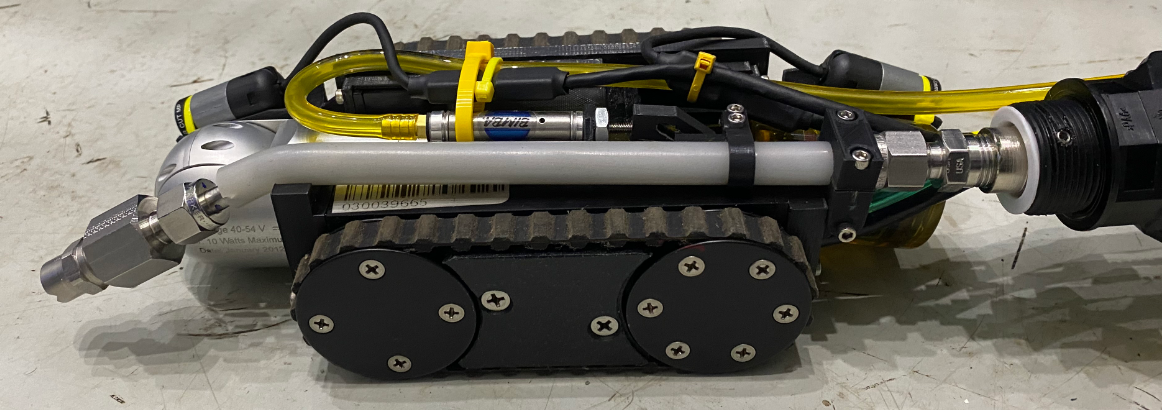Newly integrated cleaning capabilities enhance visual inspections of reactor vessel heads.
Visual inspections are a standard requirement of any nuclear plant. What isn’t so standard is what happens when those inspections identify foreign material, like debris or boric acid deposits. Not only must the issue be addressed, but the source must be identified and thoroughly cleaned in order to prevent additional issues and establish a baseline for future inspections. Addressing these deposits often requires emergent planning to assemble a new approach, new crews, new technology…all of which lead to additional costs and schedule impact.
Designed to avoid costly downtime, our Bare Metal Visual (BMV) Inspection Crawler is a small, remotely operated vehicle that can be deployed within the gap between the reactor vessel head (RVH) surface and the bottom of the insulation package. Our BMV crawler is fully equipped with a series of color cameras that can perform the required qualified visual inspections, as well as on-board cleaning capabilities to address boric acid deposits or debris that may be identified. Cleaning processes include the use of both an air interrogation “puffer” system to blow away very light, loose debris and a super-heated steam cleaning wand to address heavier, more tightly adhered boric acid deposits.
The robot’s configuration also allows for it to be utilized for the outside surface of the bottom RVH and bottom-mounted instrumentation (BMI) tubes. For a comprehensive, turn-key BMV inspection and resolution system, our inspection crawler optimizes your inspection experience without impacting your outage schedule.
Key Benefits
- Additional cleaning capabilities offer ability to remove small boric acid deposits in hard-to-reach areas on the RVH
- Allows for inspections to be performed with the RVH insulation in place, providing additional schedule savings
- Provides greater accuracy of inspection with lower radiological dose versus direct visual inspection
- Custom-made inspection software combines high-definition video and photographs to create a user-friendly database detailing the entirety of the inspection, reducing review time
- The control station for the inspection robot can be located in a low radiological dose area upwards of 100 feet away from the RVH, proving increased personnel safety via reduced dose rates




